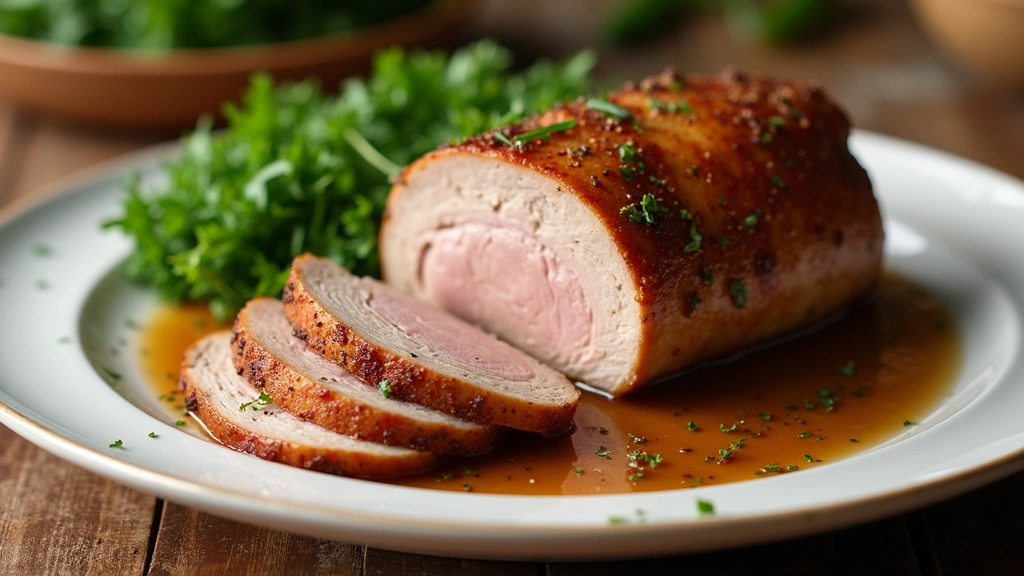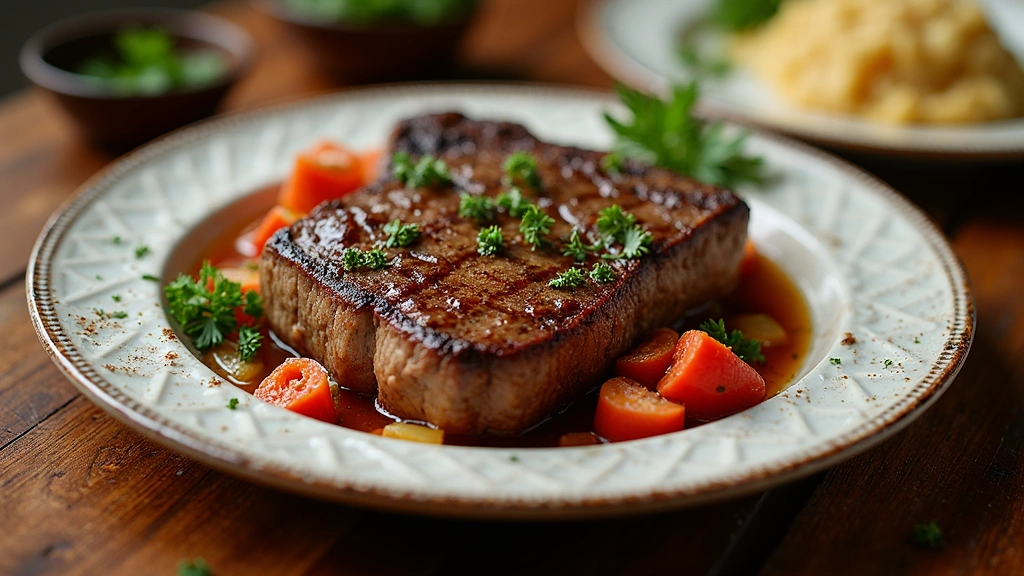Homemade ramen seasoning is a delightful way to bring the comforting flavors of Japanese cuisine right into your kitchen.
The vibrant blend of umami, spice, and aromatic herbs creates a versatile seasoning that can elevate any noodle dish.
I first experimented with this seasoning during a cozy winter evening, craving the warm embrace of a bowl of ramen.
With just a few simple ingredients, you can customize the flavor to suit your taste, making it a perfect addition to any meal.
The History and Cultural Significance
• Ramen seasoning traces its origins to Japan, where it was originally created to enhance the flavor of noodle soups.
• The dish evolved over decades as different regions developed their unique styles and flavor profiles, eventually becoming the beloved version we know today.
• In Japan, ramen is traditionally served during festive occasions and social gatherings, symbolizing comfort and togetherness.
• While many variations of ramen exist, the authentic seasoning maintains a balance of flavors that sets it apart from imitations.
Recipe Overview
Nutritional Information (per serving)
Ingredients
Essential Equipment Guide
Mortar and Pestle: This tool is crucial for grinding spices and herbs to release their essential oils and flavors. While a spice grinder can be a substitute, using a mortar and pestle allows for better control over the texture and freshness of your seasoning blend.
Measuring Spoons: Accurate measurements are vital for balancing flavors in your seasoning. Look for a set that includes both standard and metric measurements to ensure precision.
Mixing Bowl: A good mixing bowl is important for combining all your ingredients evenly. Choose a bowl that is large enough to prevent spills and allows for thorough mixing.
Preparation Methods
Grinding Spices: Grinding spices like dried mushrooms is essential for releasing their flavors. Use a mortar and pestle for a coarser texture or a spice grinder for a finer blend. Ensure the spices are fresh for the best flavor.
Measuring Ingredients: Accurate measurement ensures the perfect balance of flavors. Use measuring spoons and cups to ensure precision. Always level off dry ingredients for consistency in flavor.
Mixing: Thorough mixing is key to achieving an even distribution of flavors. Use a whisk or fork to combine the ingredients well. Look for uniform color and texture to ensure all flavors meld together.
Step 1: Gather Ingredients
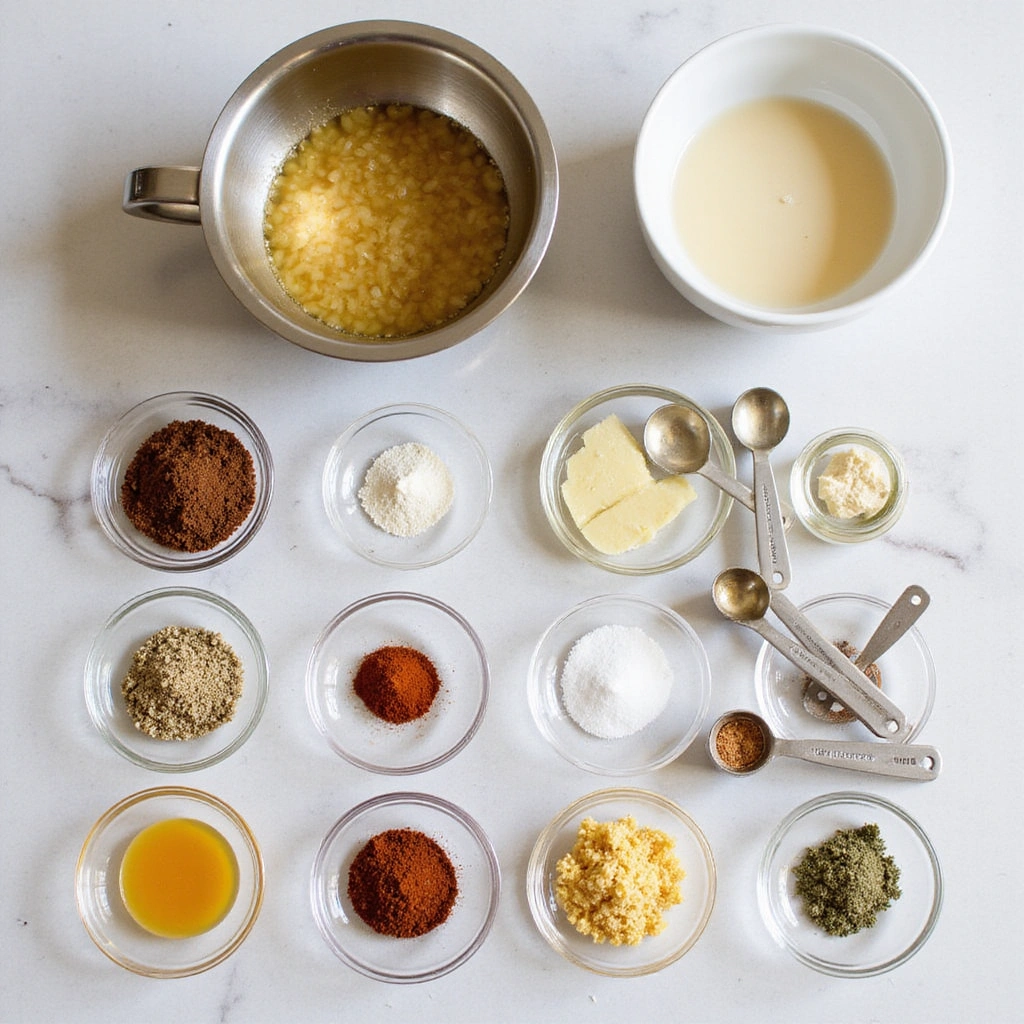
Begin by collecting all the ingredients listed in the recipe.
Make sure to have your measuring spoons and mixing bowl ready.
Check for any missing items and prepare them for easy access.
This will streamline the cooking process and make it more enjoyable.
Step 2: Grind the Dried Shiitake Mushrooms

Place the dried shiitake mushrooms into the mortar and pestle.
Grind them until they reach a fine powder consistency.
This will release their umami flavor, making your seasoning richer.
Take your time to ensure that the texture is even and not too coarse.
Step 3: Measure the Seasoning Ingredients
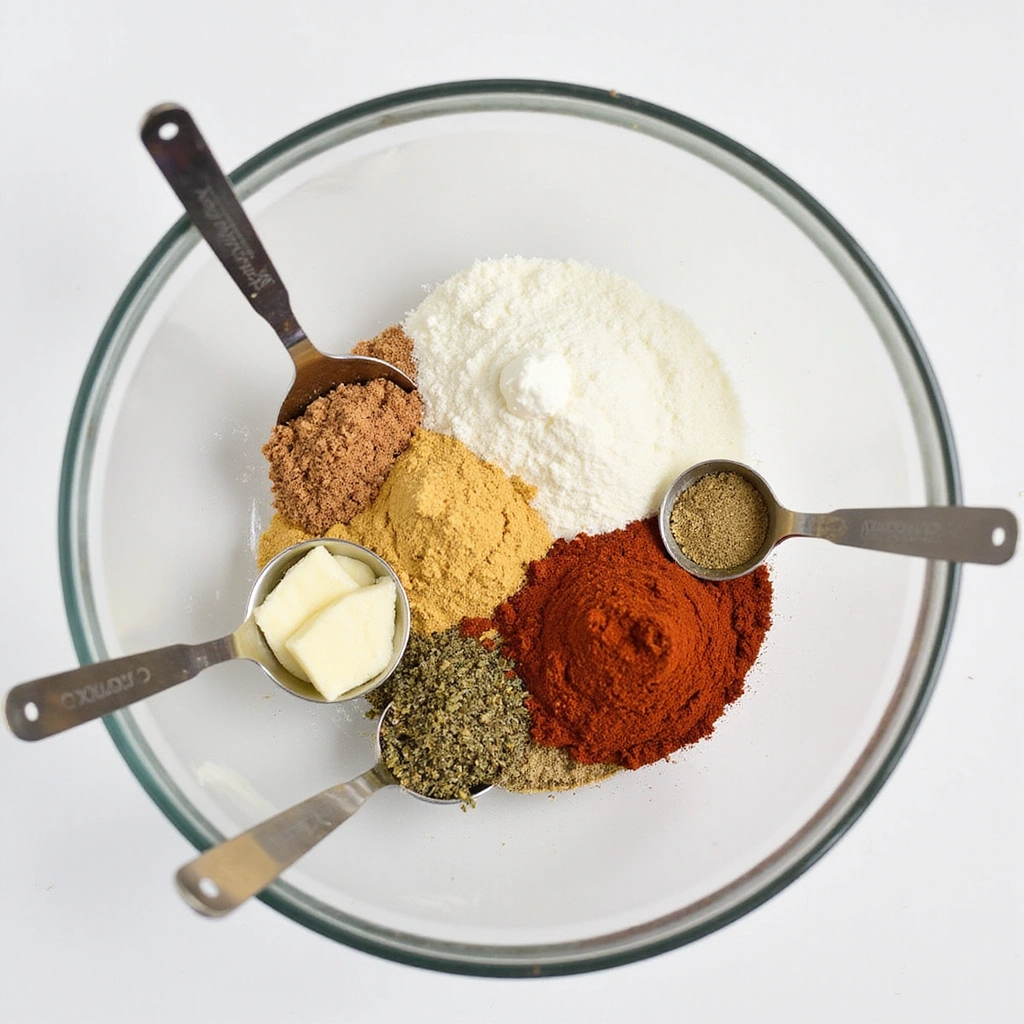
Using your measuring spoons, measure out the garlic powder, onion powder, red pepper flakes, black pepper, and sea salt.
Ensure each ingredient is measured accurately for balanced flavor.
Level off the spoons to avoid excess.
Place the measured spices in the mixing bowl.
Step 4: Add the Ground Shiitake Mushrooms
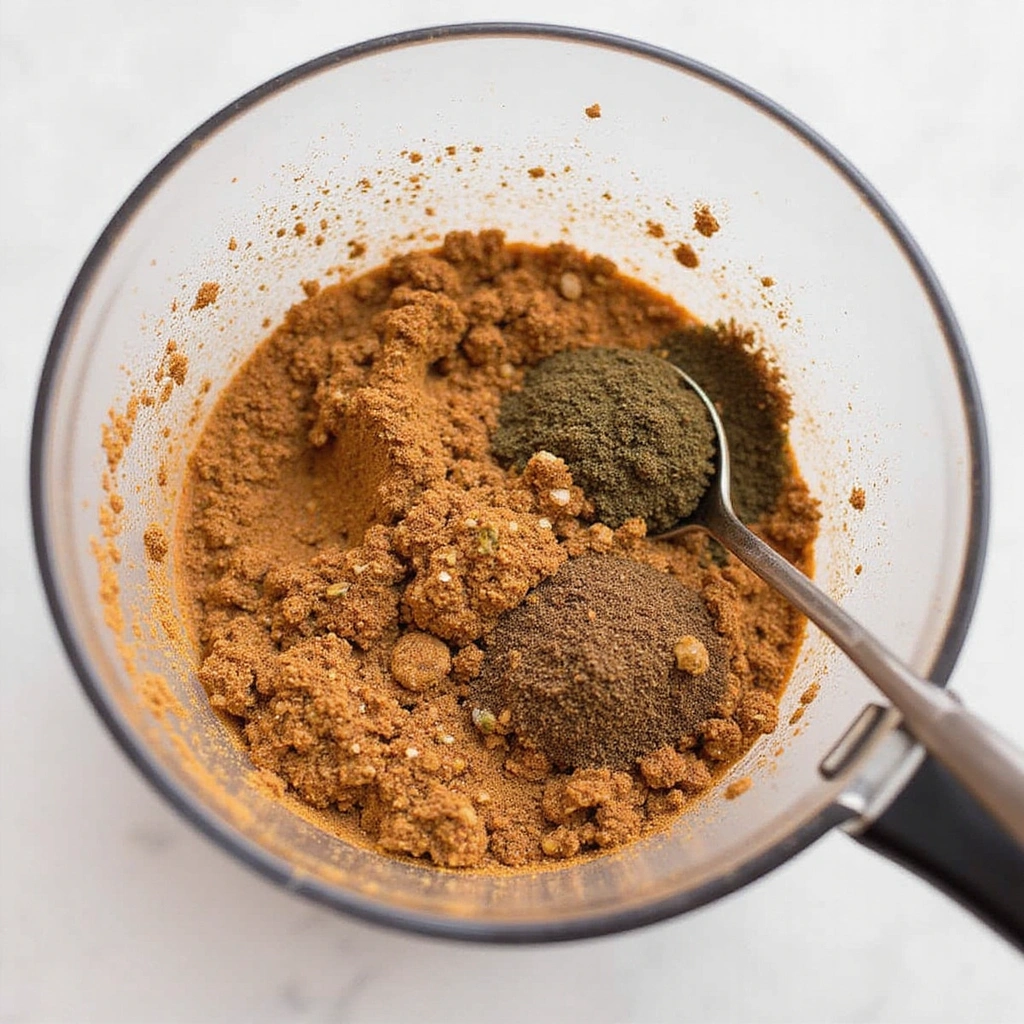
Add the ground shiitake mushrooms to the mixing bowl containing the other spices.
Stir gently to combine the ingredients.
This will ensure the umami flavor is evenly distributed throughout the seasoning.
Look for a uniform mixture in color and texture.
Step 5: Incorporate Sugar and Dried Green Onions
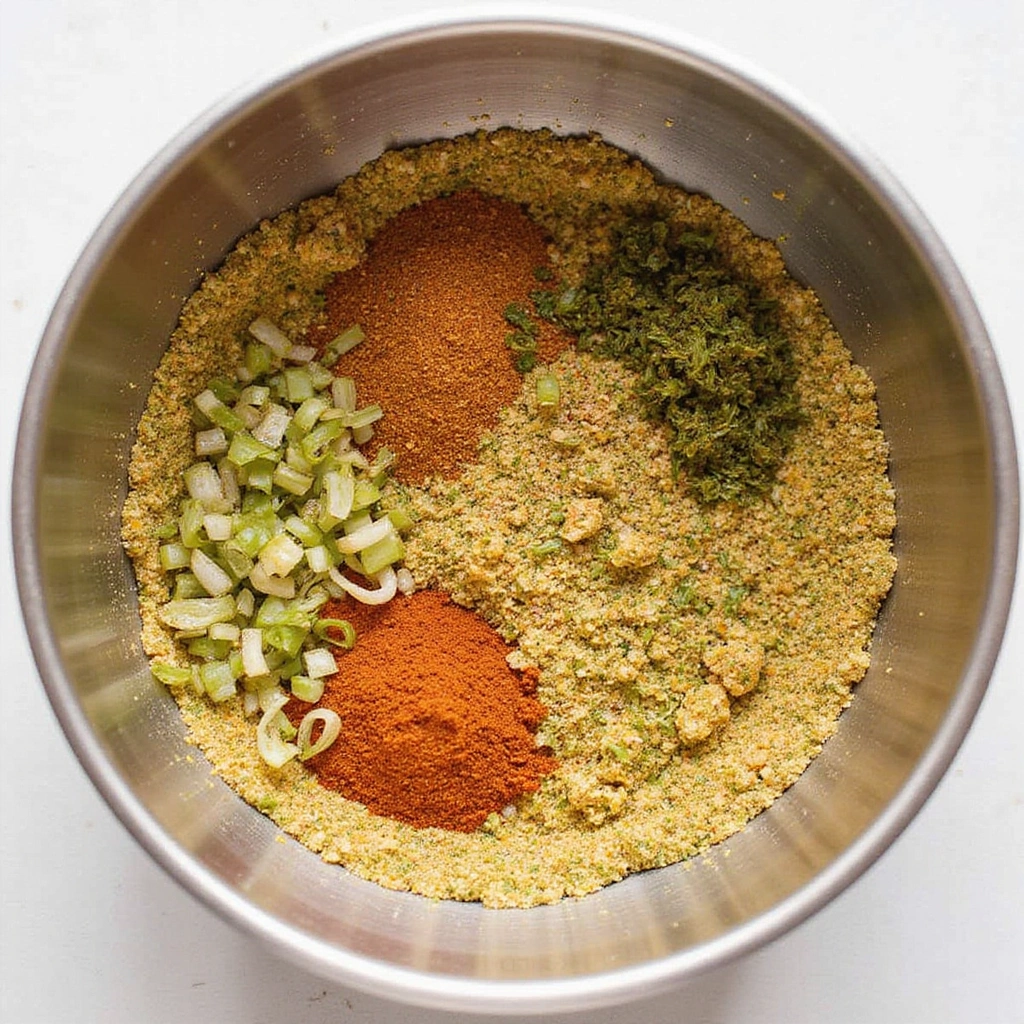
Measure and add the sugar and dried green onions to the spice mix.
These ingredients will balance the savory flavors with a hint of sweetness.
Stir thoroughly to ensure all components are well combined.
Taste a tiny pinch to adjust sweetness if necessary.
Step 6: Store the Seasoning
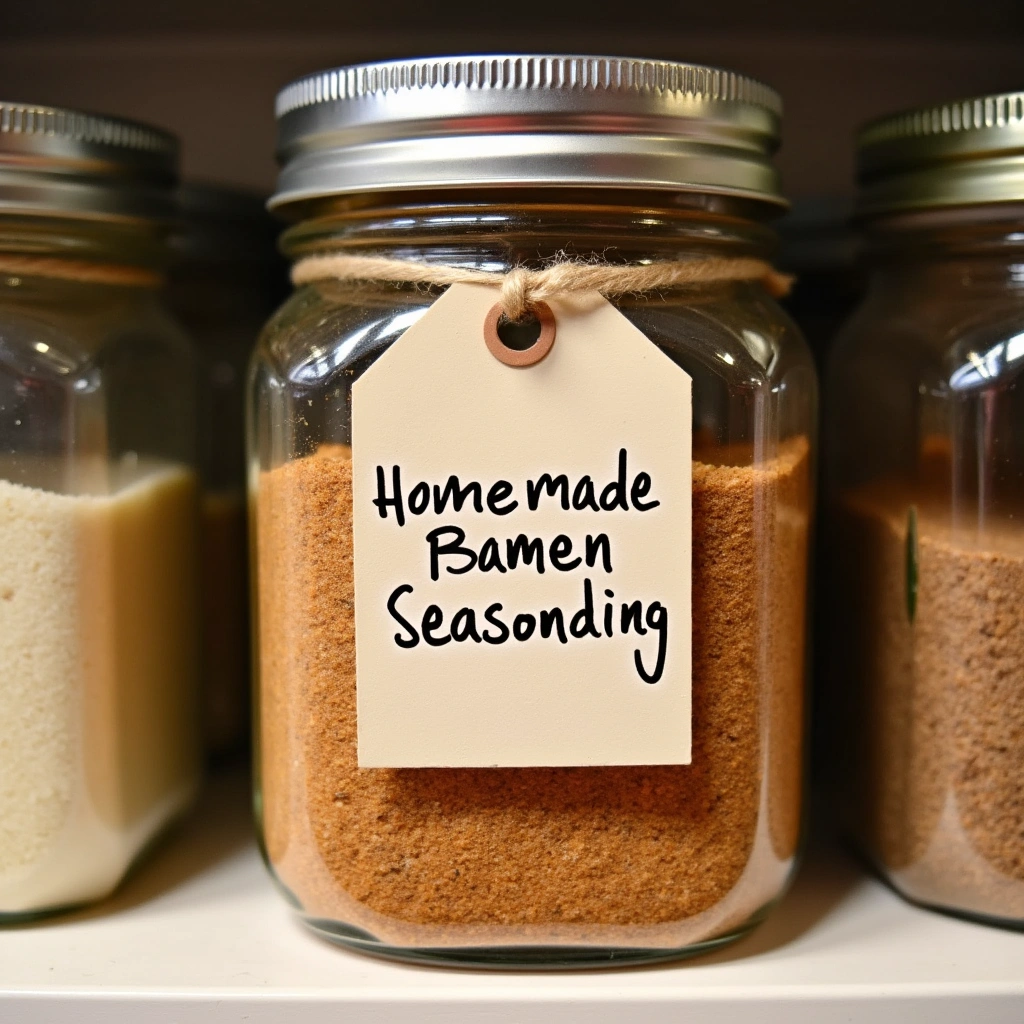
Transfer the seasoning into an airtight container for storage.
Label the container with the date and contents for easy identification.
Store in a cool, dark place to preserve flavor.
This seasoning can last for several months if stored properly.
Step 7: Prepare Ramen with Your Seasoning

When ready to use, prepare your ramen noodles according to package instructions.
Add a teaspoon or more of your homemade seasoning to the broth.
Stir well to incorporate the flavors into the soup.
Taste and adjust the seasoning as needed with additional salt or spice.
Step 8: Enjoy Your Ramen

Serve your ramen hot, garnished with your favorite toppings like green onions, soft-boiled egg, or nori.
Take time to savor the rich, homemade flavors that you created.
Share the bowl with friends or family for a cozy meal.
Feel free to experiment with additional ingredients for a personalized touch.
Critical Timing and Temperature Guide
Storing Seasoning: Ensure your seasoning is kept in an airtight container and stored in a cool, dark place. This will prevent moisture absorption and preserve flavor over time. Avoid exposing it to direct sunlight or heat sources, which can degrade its quality.
Cooking Ramen Noodles: Follow the package instructions for cooking noodles, usually about 3-5 minutes in boiling water. Look for them to be tender but still firm (al dente). Overcooking can lead to mushy noodles that detract from the dish.
Combining Seasoning: Add the seasoning to the broth while it’s hot to enhance the flavors. Stir well to ensure proper integration. Taste as you go to avoid overpowering the dish with salt or spice.
Pro Tips for Ramen Seasoning Recipe
• Ingredient Selection: Use high-quality dried shiitake mushrooms for depth of flavor; they make a significant difference in umami.
• Preparation Secret: Toasting spices lightly before grinding can unlock even more flavors.
• Temperature Management: Ensure your noodles are at the right temperature before adding the seasoning to maintain the integrity of the flavors.
• Texture Enhancement: Consider adding freshly grated ginger for a unique texture and flavor.
• Flavor Layering: Experiment with other spices like sesame seeds or miso powder to create a more complex flavor profile.
• Make-Ahead Strategies: Prepare a larger batch of the seasoning and store it for up to six months.
• Restaurant-Quality Finishing Touches: Garnish with fresh herbs or a drizzle of sesame oil for elevated presentation.
• Equipment Optimization: A good quality mortar and pestle can make a world of difference in achieving the right texture for your spices.
Troubleshooting Common Issues
• Seasoning Too Salty: This can happen if too much salt is added initially. To balance it, add more water or broth to dilute the saltiness. You can also add a teaspoon of sugar to counteract the saltiness.
• Flavor Too Mild: If the seasoning lacks depth, consider adding more shiitake mushrooms or increasing the garlic powder. Adjusting the ratios can enhance the overall flavor profile.
• Texture Off: If the seasoning feels gritty, ensure spices are ground finely. Use a sieve to sift out larger particles if needed.
• Not Enough Umami: Reinforce the umami flavor by adding additional dried mushrooms or even a splash of soy sauce to the finished broth.
• Too Spicy: If the seasoning is too spicy, balance it by adding more sugar or a creamy ingredient like coconut milk to the broth.
Variations and Regional Differences
• Shoyu Ramen: This version uses soy sauce as a base, adding a deeper, savory flavor to the broth. Consider incorporating soy sauce into your seasoning blend for an authentic taste.
• Miso Ramen: A miso-based broth introduces sweetness and complexity. Add miso paste to the broth along with the seasoning for a unique twist.
• Curry Ramen: This variation incorporates curry powder, giving it a distinct flavor profile. Experiment by adding curry powder to the seasoning for a fusion experience.
• Modern Interpretations: Consider plant-based options using mushroom broth and vegan seasonings for a contemporary take on traditional ramen.
Food Science Behind the Recipe
• Umami Flavor: This savory taste is primarily derived from glutamate found in shiitake mushrooms. Understanding umami helps you balance flavors more effectively in your dishes.
• Maillard Reaction: This chemical reaction occurs when proteins and sugars are heated, creating complex flavors. Toasting spices before grinding them enhances this reaction, resulting in a richer seasoning.
• Emulsification: This process allows for the blending of oil and water, important for creating a cohesive broth. Using fat like sesame oil can help in achieving a silky texture in the soup.
Frequently Asked Questions
What’s the most common mistake people make when preparing homemade ramen seasoning? Many people overlook the importance of balancing flavors; using too much salt or not enough umami can lead to an unbalanced dish.
Can I prepare components of this dish in advance? Yes, you can prepare the seasoning ahead of time and store it in an airtight container for up to six months.
How do I adapt this recipe for dietary restrictions? To make it gluten-free, use tamari instead of soy sauce, and consider avoiding additional ingredients that contain gluten.
What’s the best way to store and reheat leftovers? Store leftover ramen in an airtight container in the fridge for up to three days. Reheat gently on the stove to maintain noodle texture.
Can I freeze this dish? Yes, you can freeze the broth and noodles separately. Just be sure to cool them completely before placing them in airtight containers.
What wine or beverages pair best with this dish? A light, crisp sake or a dry white wine complements the flavors of ramen beautifully.
How can I scale this recipe up for a crowd? Simply multiply the seasoning ingredients by the number of servings you wish to prepare to ensure adequate flavor.
What side dishes complement this recipe best? Light salads, pickled vegetables, or steamed dumplings serve as great accompaniments.
How do professional chefs elevate this dish for restaurant service? They often use high-quality broths and fresh ingredients, layering flavors and textures to create a memorable dining experience.
Serving and Presentation Guide
• Traditional Presentation: Ramen is typically served in a wide, deep bowl with toppings artfully arranged on top. Use contrasting colors to make the dish visually appealing, and serve with chopsticks and a soup spoon.
• Modern Plating Ideas: Consider using a minimalist approach by placing the noodles in the bowl first and adding a small mound of toppings. A drizzle of oil or sauce adds visual flair without overwhelming the dish.
• Accompaniment Suggestions: Serve with pickled ginger, sesame seeds, or a side of gyoza for an authentic experience. A light salad can also provide a refreshing contrast.
• Special Occasion Presentation: For celebrations, elevate the dish with premium garnishes like truffle oil or edible flowers for a stunning finish.
Conclusion
Homemade ramen seasoning is a simple yet transformative addition to your cooking repertoire.
With customizable flavors, you can create a unique experience every time you prepare ramen.
I encourage you to try this recipe and let your creativity shine in the kitchen.



